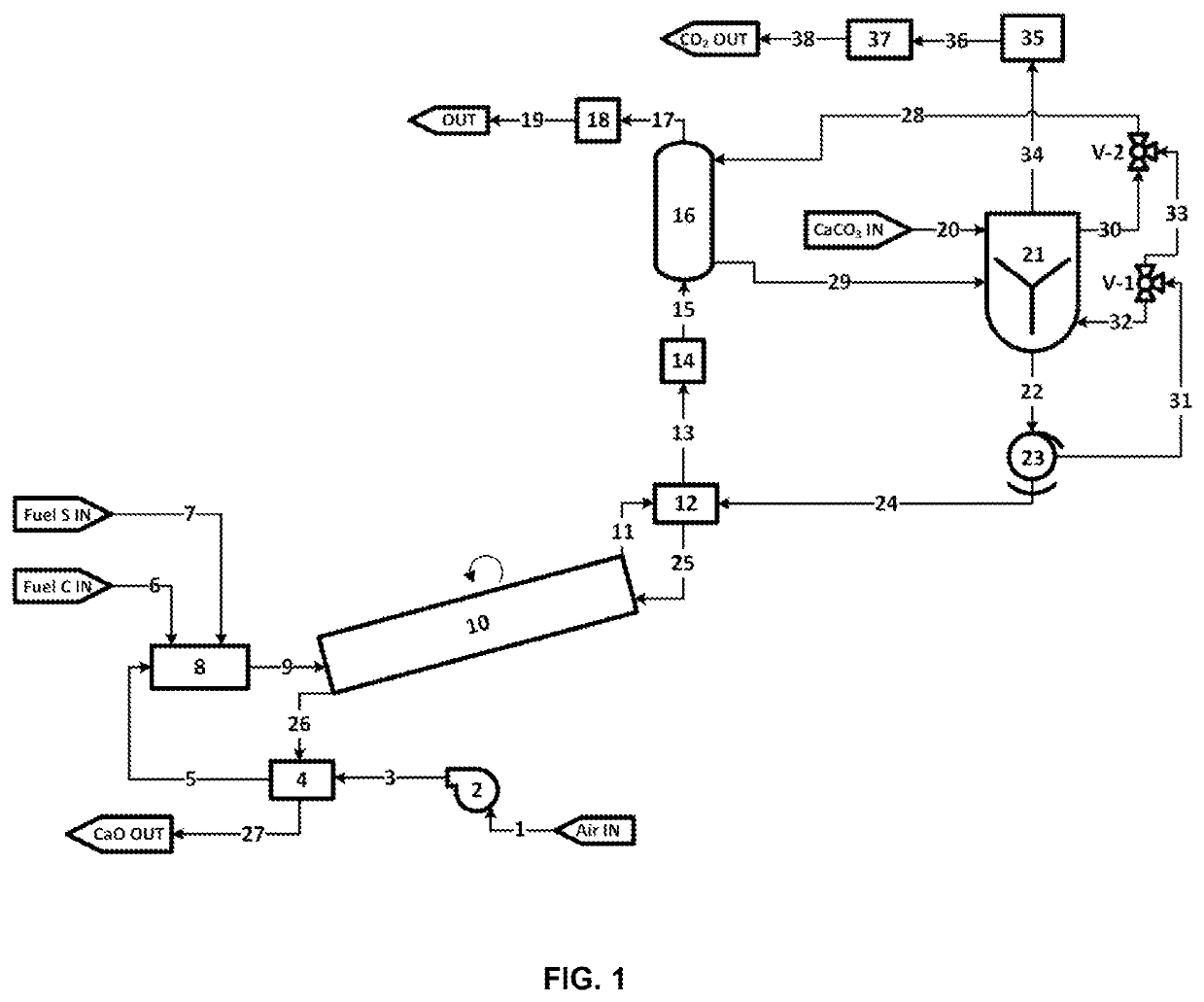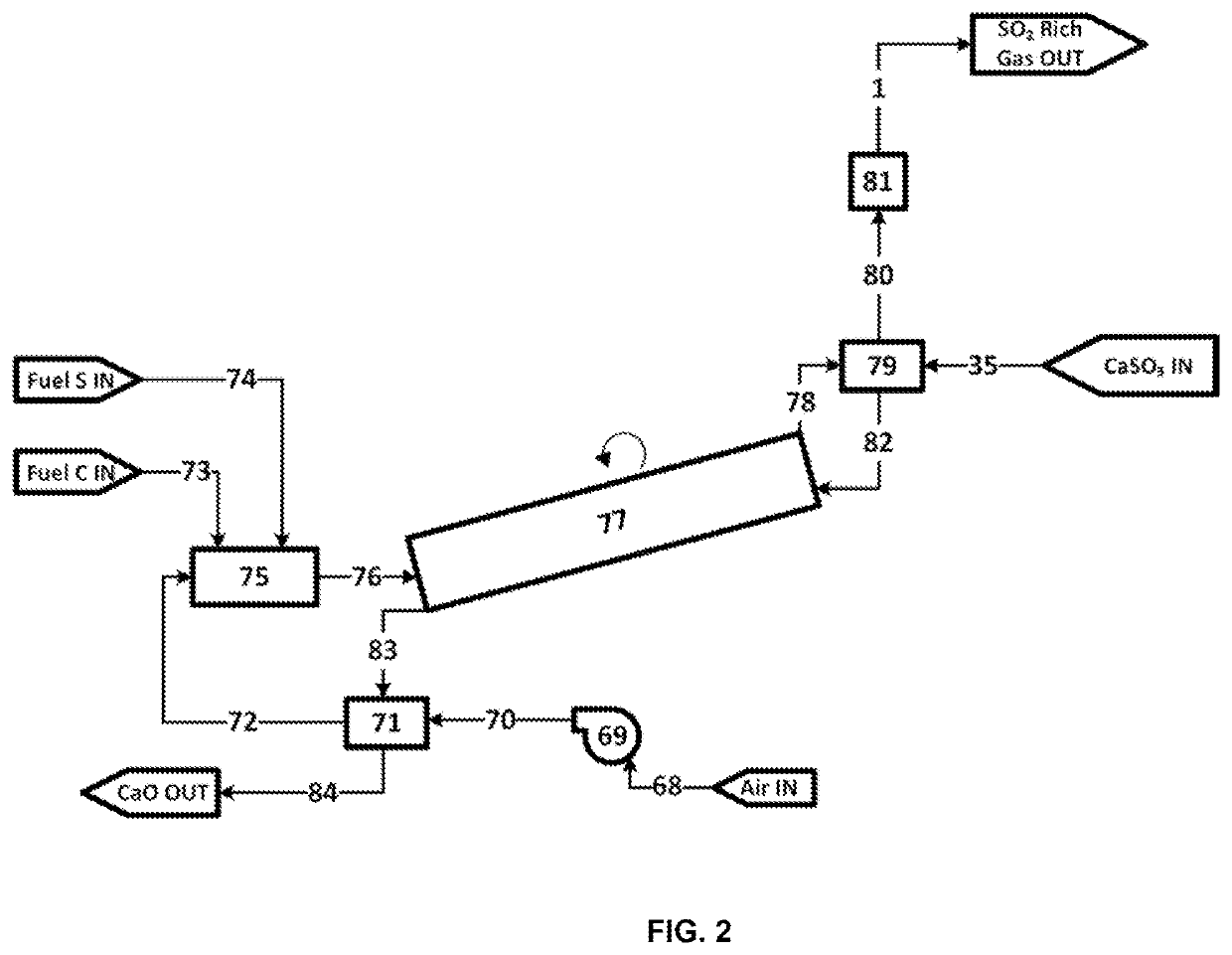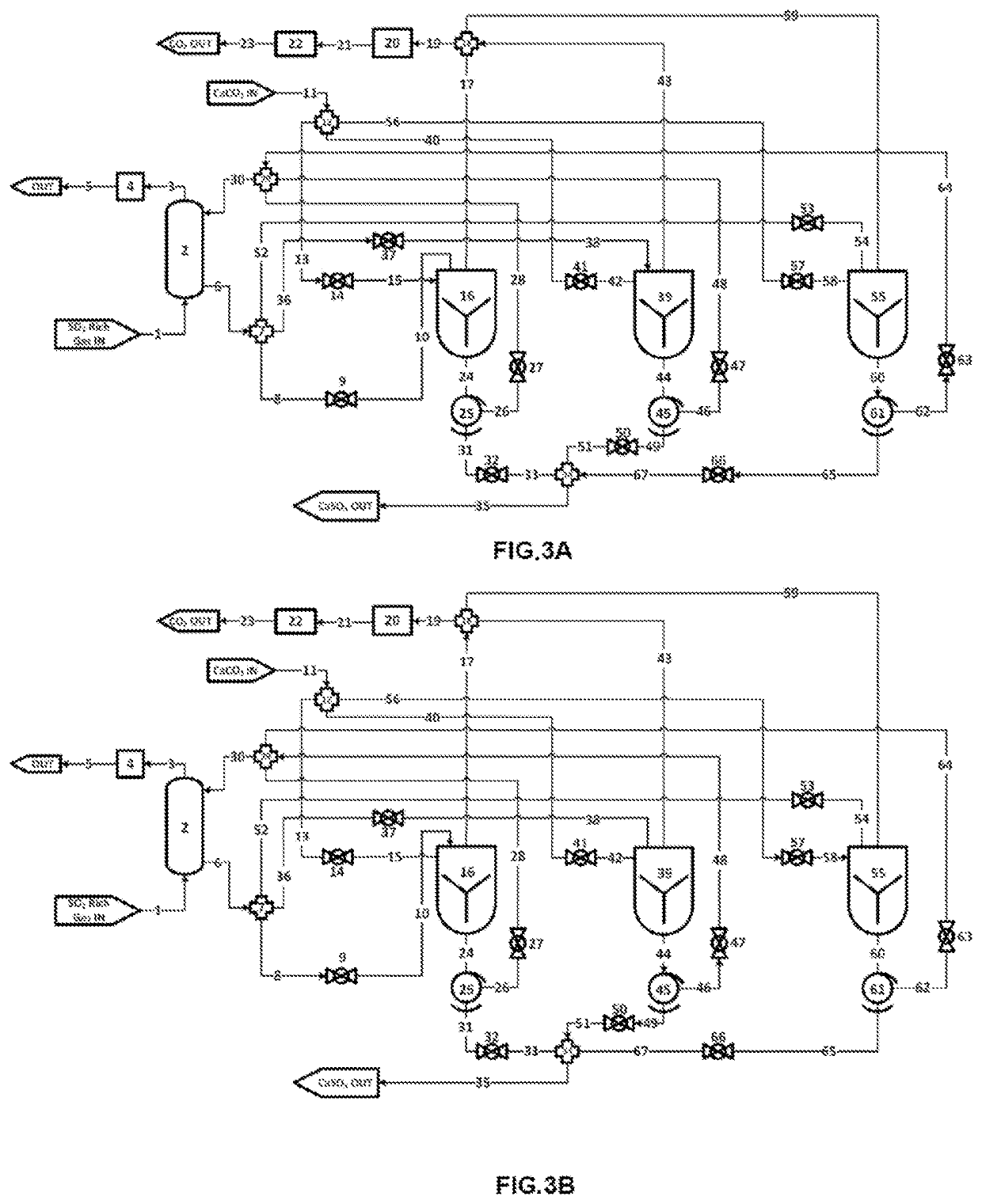Processes for the Production of Citric Acid
a technology of citric acid and process, applied in the direction of separation processes, magnesia, organic chemistry, etc., can solve the problems of exceeding the value of co2, requiring very high capital and operating costs, and so as to prevent degradation or contamination of carbon dioxide, prevent oxidation, and prevent oxidation or degradation or contamination.
- Summary
- Abstract
- Description
- Claims
- Application Information
AI Technical Summary
Benefits of technology
Problems solved by technology
Method used
Image
Examples
example definitions
[0021]Regenerable Acid Gas or Regenerable Acid: A regenerable acid may comprise an acidic chemical which can form a salt and is capable of being regenerated from said salt into its original acidic chemical form. For example, a regenerable acid may comprise an acid which can be reacted to form a salt and can be regenerated from said salt by, for example, thermal decomposition of said salt, which may involve, for example, a gas forming decomposition. For example, a regenerable acid may comprise an acid which can be reacted to form a salt and can be regenerated from said salt by, for example, electrochemical means, which may include, but is not limited to, electrodialysis. A regenerable acid gas may be an acid which is generally at a gas phase when said acid is at an isolated state under certain conditions. Regenerable acid and regenerable acid gas may be used interchangeably. Example regenerable acid gases or acids may include, but are not limited to, one or more or a combination of t...
example chemistry
[0070]
Example Summary of Inputs and Outputs for the Present InventionInputsOutputsCaCO3 and / or OtherCaO and / or CementCement FeedstocksFuelCaptured CO2(Carbonaceous Fuel and / or Sulfurous Fueland / or Hydrogen Fuel and / or NitrogenousFuel)Sulfurous Salt Waste-Productor Useful Byproduct
[0071]Please note—the Sulfurous Fuel and Sulfurous Salt Waste-Product or Useful Byproduct may comprise significantly smaller mass or amounts than other inputs and outputs.
Reaction 1: Conversion of CaCO3 and SO2 or SO2 Solution into CaSO3 and Captured CO2
CaCO3(s)+SO2(rich−aq)⇒CaSO3(s)+SO2(lean−aq)+CO2(g)
ΔH=−24.67 kJ / mol at 25° C.[0072]Description: The present reaction may involve reacting a carbon dioxide containing salt or carbonate salt, such as calcium carbonate, with a regenerable acid gas, such as sulfur dioxide, to form pressurized or high concentration or nearly pure CO2 and a regenerable acid gas salt, such as calcium sulfite. If desired, the present reaction may be conducted under mild temperature c...
example exemplary embodiments and sub-embodiments
Example Exemplary Embodiments
[0136]A process for producing captured carbon dioxide comprising:
[0137]Reacting a carbonate salt with a regenerable acid gas to produce a cation—regenerable acid gas salt and gaseous carbon dioxide;
[0138]Thermally decomposing said cation—regenerable acid gas salt to produce cement, an oxide, or a combination thereof
[0139]A process for producing captured carbon dioxide comprising:
[0140]Reacting a carbonate salt with a regenerable acid gas to produce a cation—regenerable acid gas salt and gaseous carbon dioxide;
[0141]Thermally decomposing said cation—regenerable acid gas salt to produce cement, an oxide, regenerable acid gas, or a combination thereof
[0142]A process for producing captured carbon dioxide comprising:
[0143]Reacting a carbonate salt with sulfur dioxide to produce a sulfite salt and gaseous carbon dioxide;
[0144]Thermally decomposing said sulfite salt to produce cement, an oxide, or a combination thereof
[0145]A process for producing captured carb...
PUM
| Property | Measurement | Unit |
|---|---|---|
| partial pressure | aaaaa | aaaaa |
| partial pressure | aaaaa | aaaaa |
| partial pressure | aaaaa | aaaaa |
Abstract
Description
Claims
Application Information
 Login to View More
Login to View More - R&D
- Intellectual Property
- Life Sciences
- Materials
- Tech Scout
- Unparalleled Data Quality
- Higher Quality Content
- 60% Fewer Hallucinations
Browse by: Latest US Patents, China's latest patents, Technical Efficacy Thesaurus, Application Domain, Technology Topic, Popular Technical Reports.
© 2025 PatSnap. All rights reserved.Legal|Privacy policy|Modern Slavery Act Transparency Statement|Sitemap|About US| Contact US: help@patsnap.com



